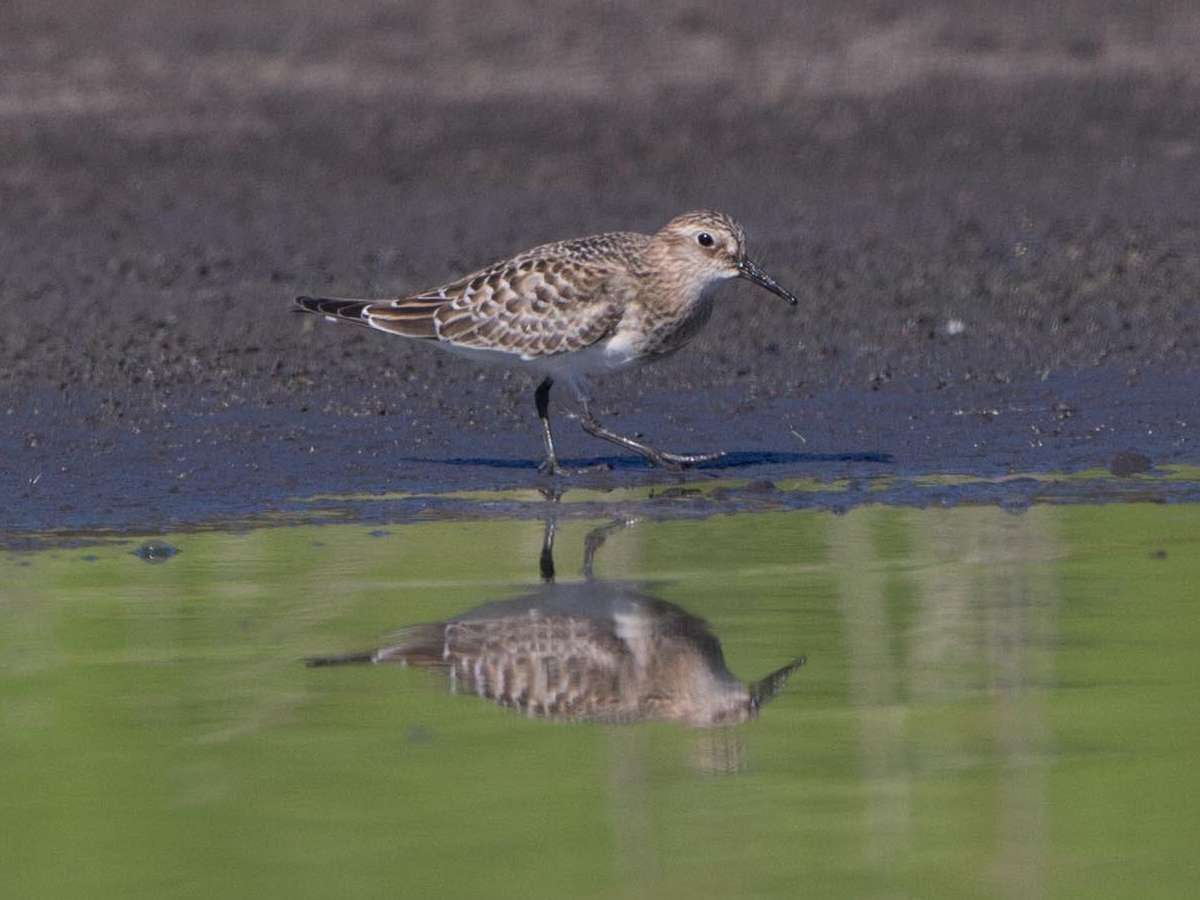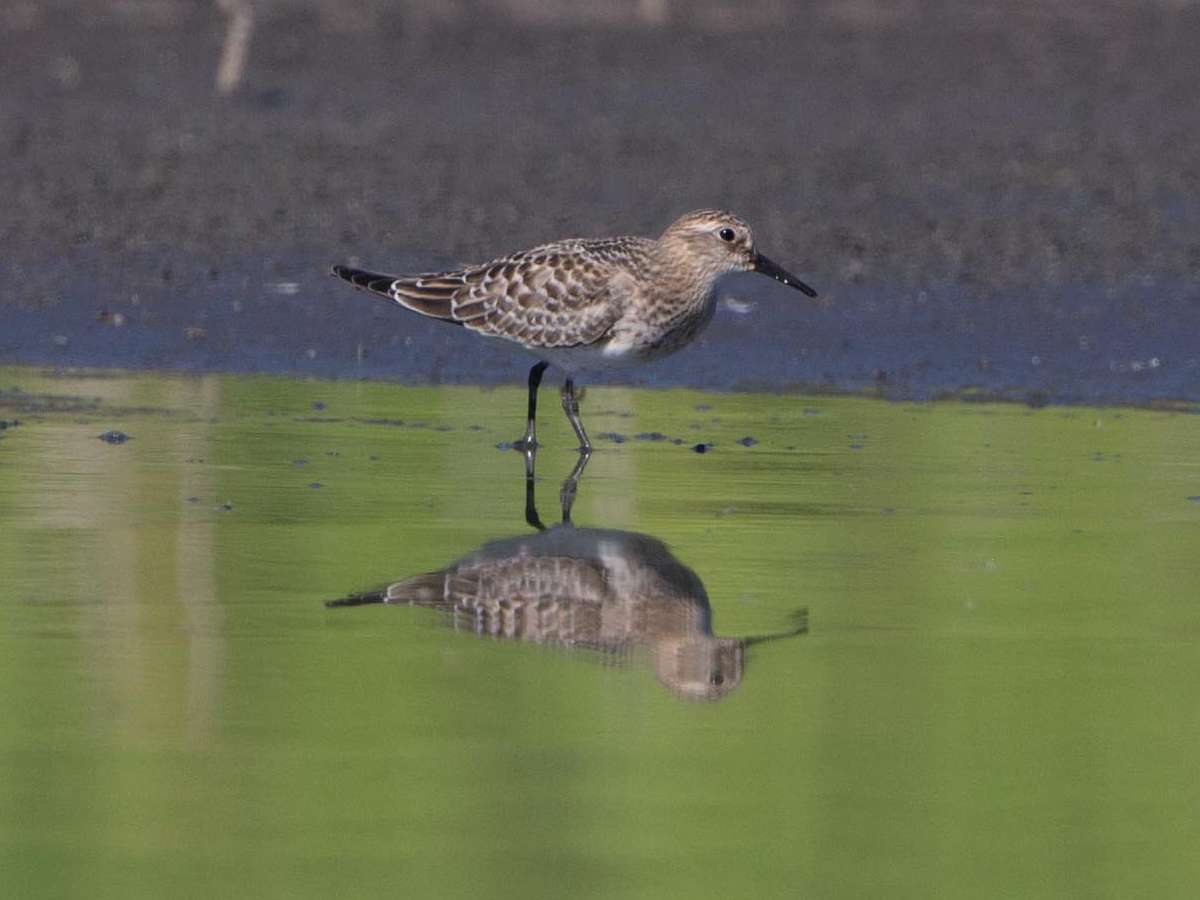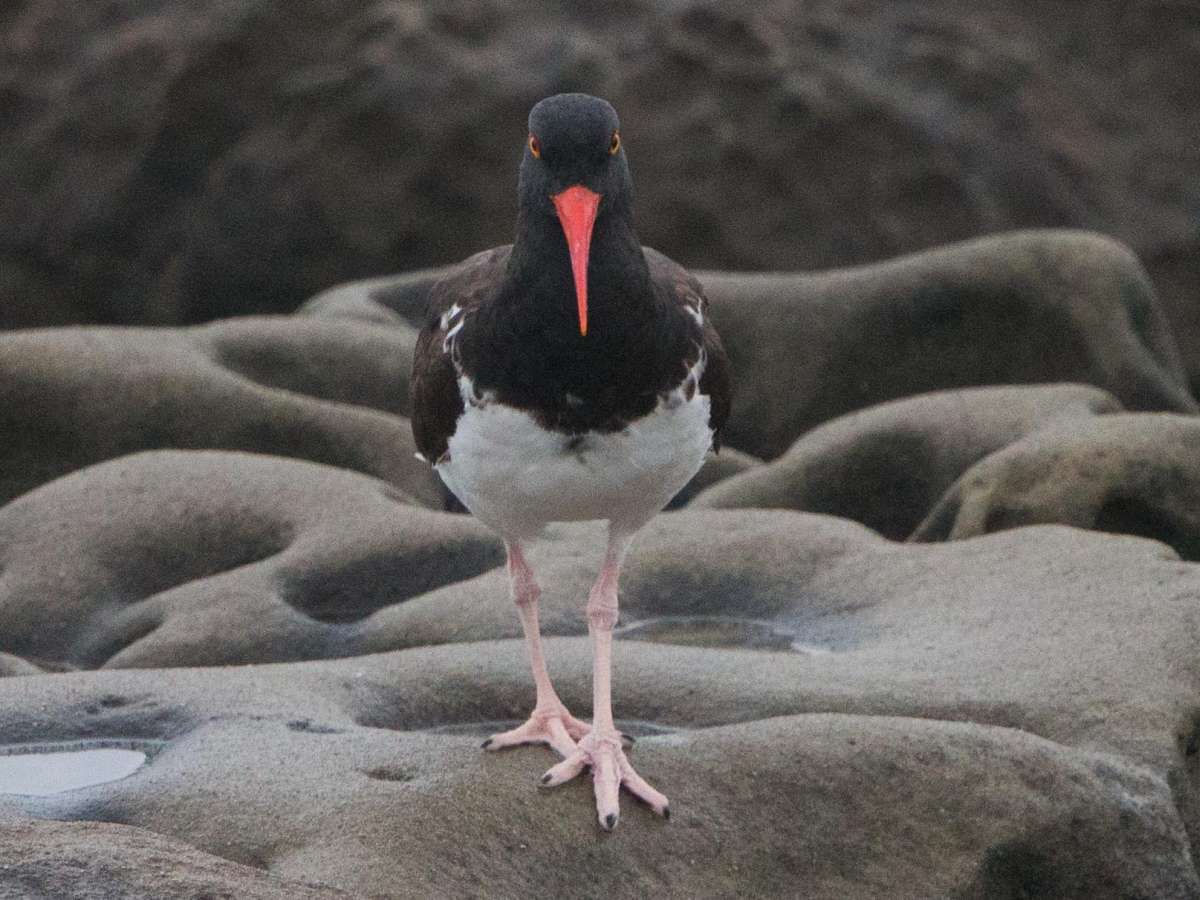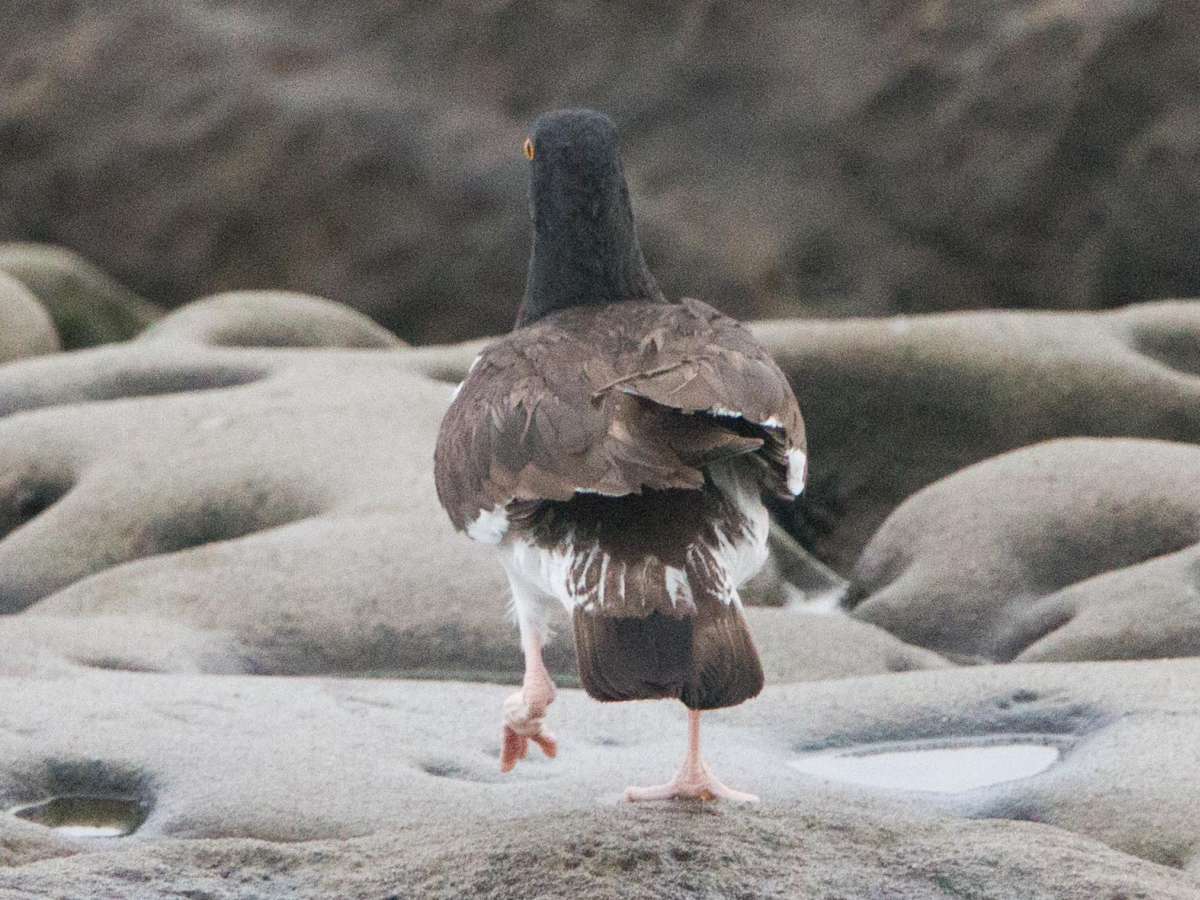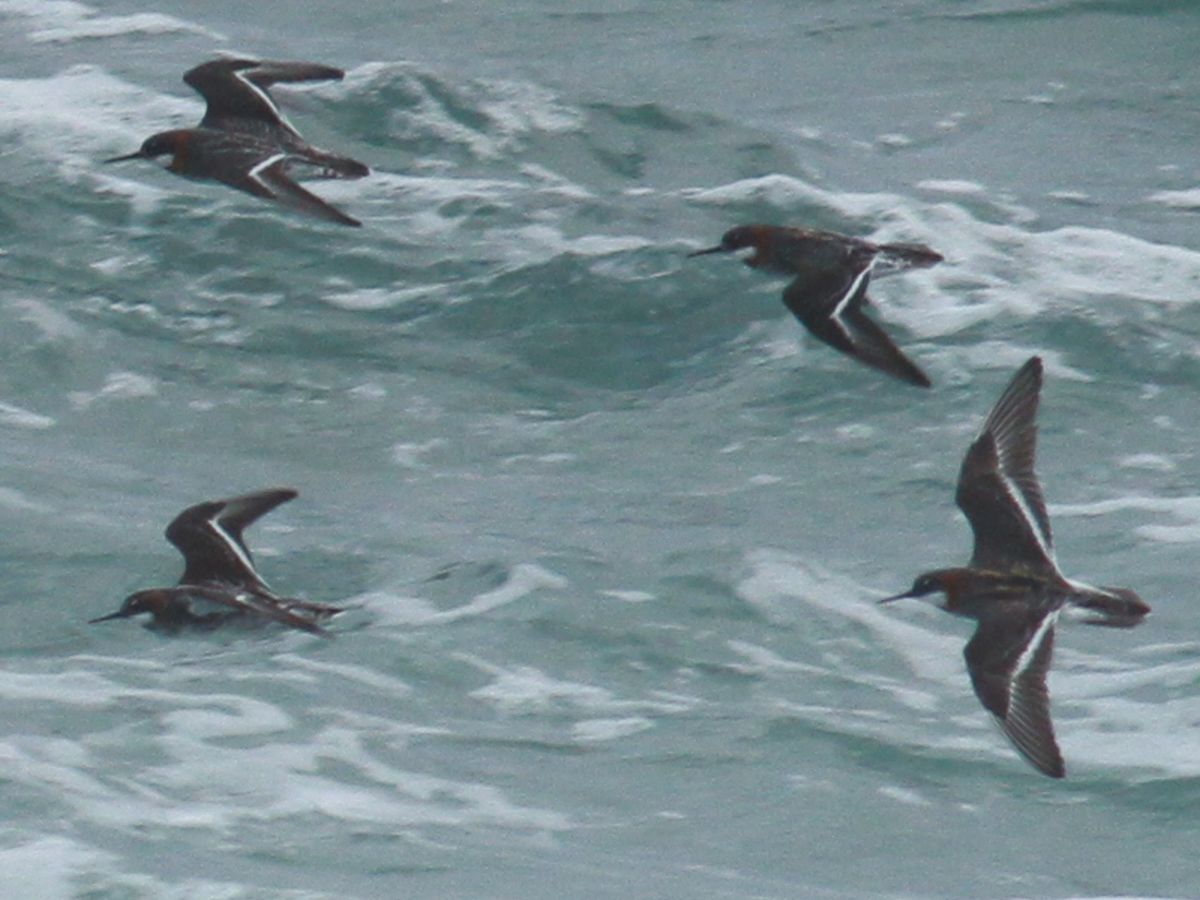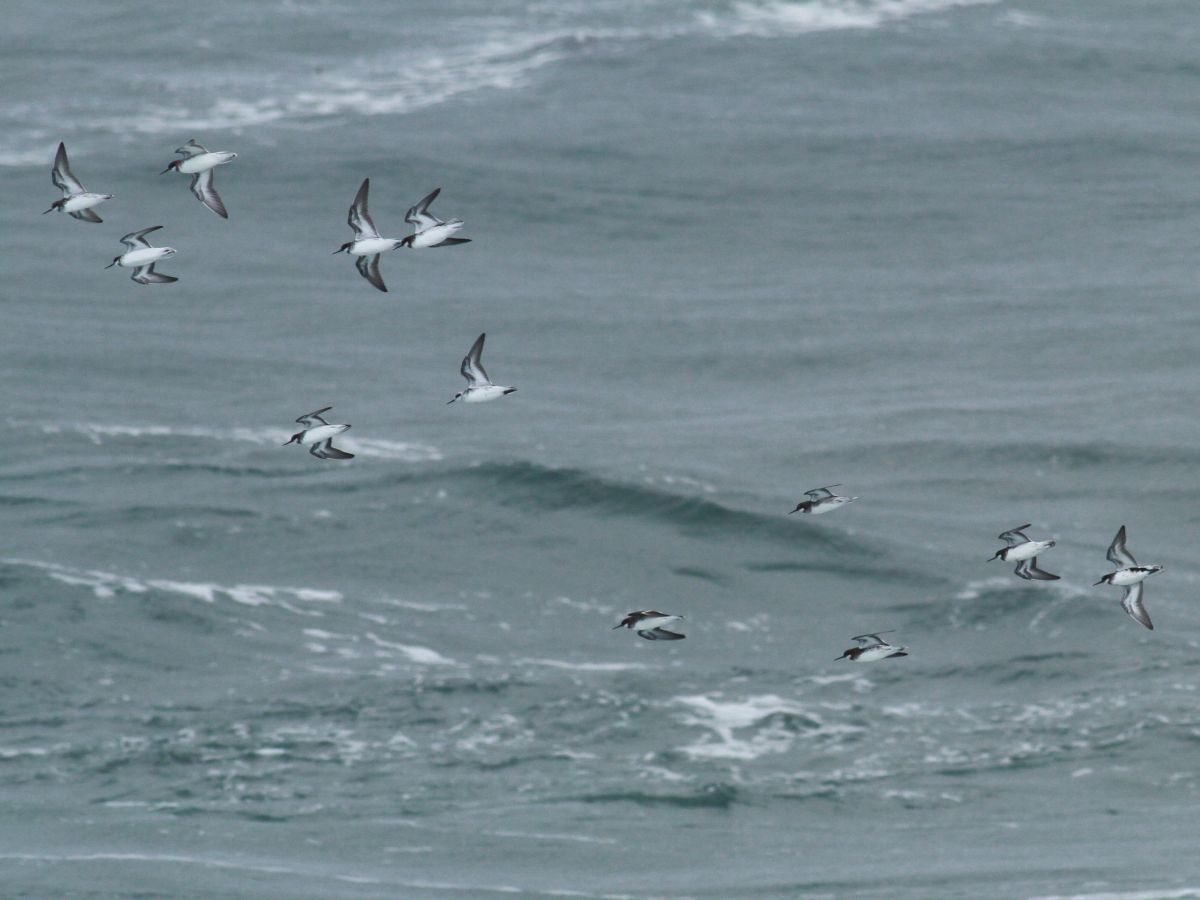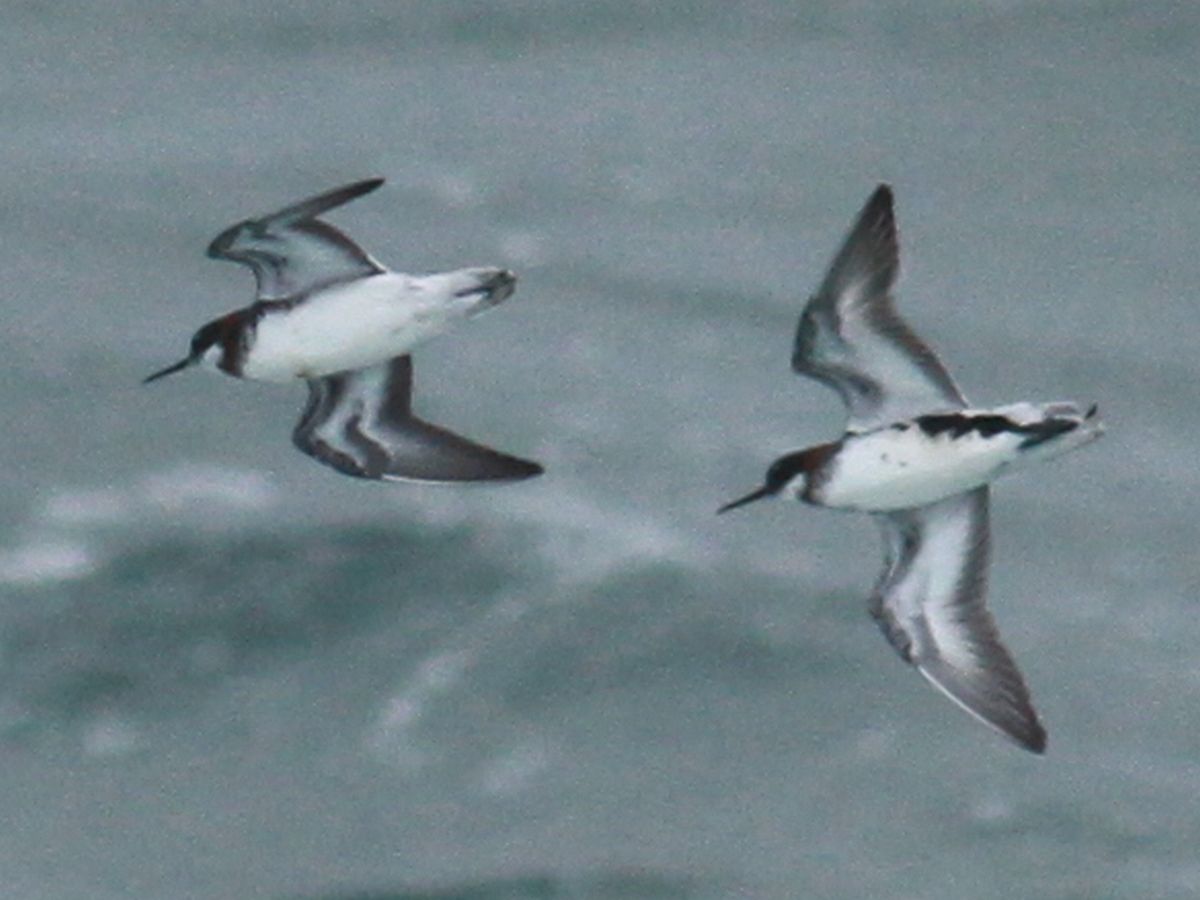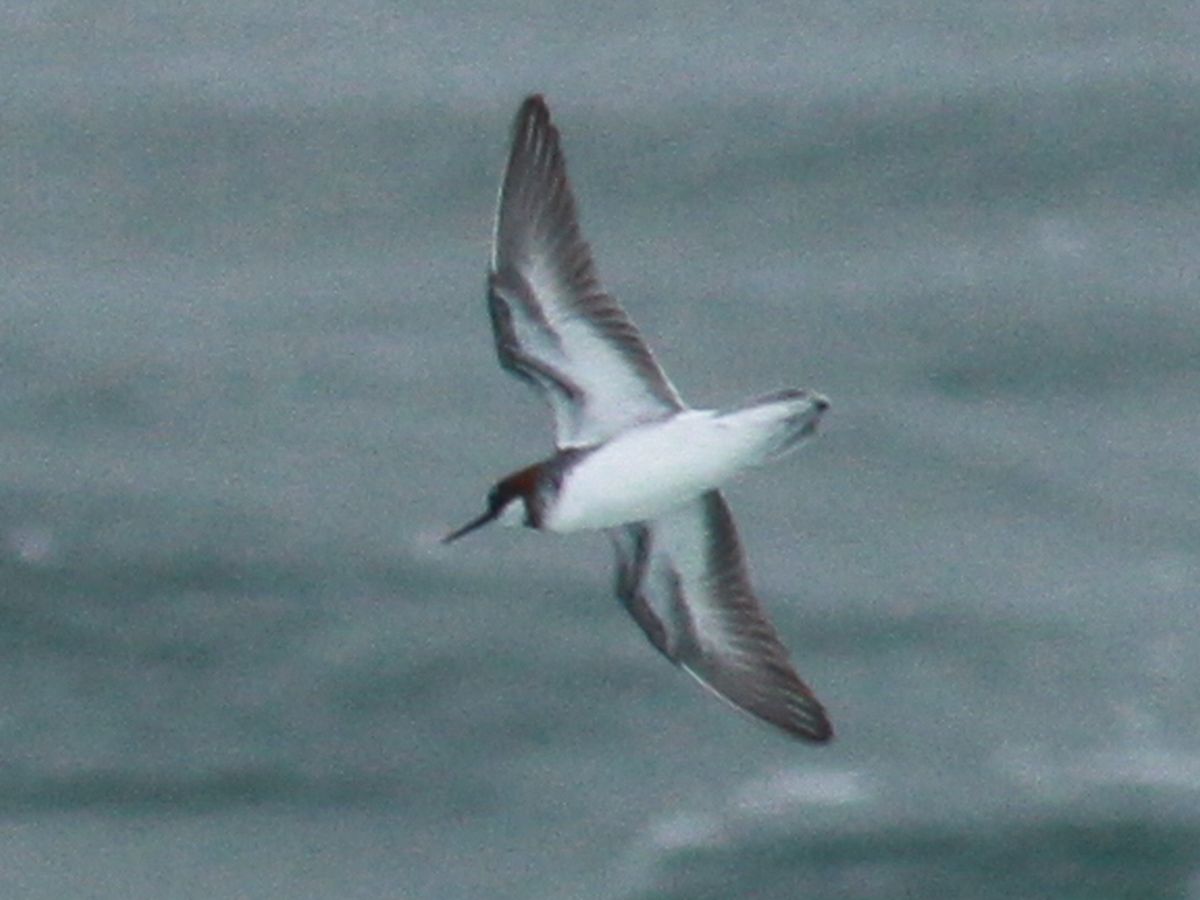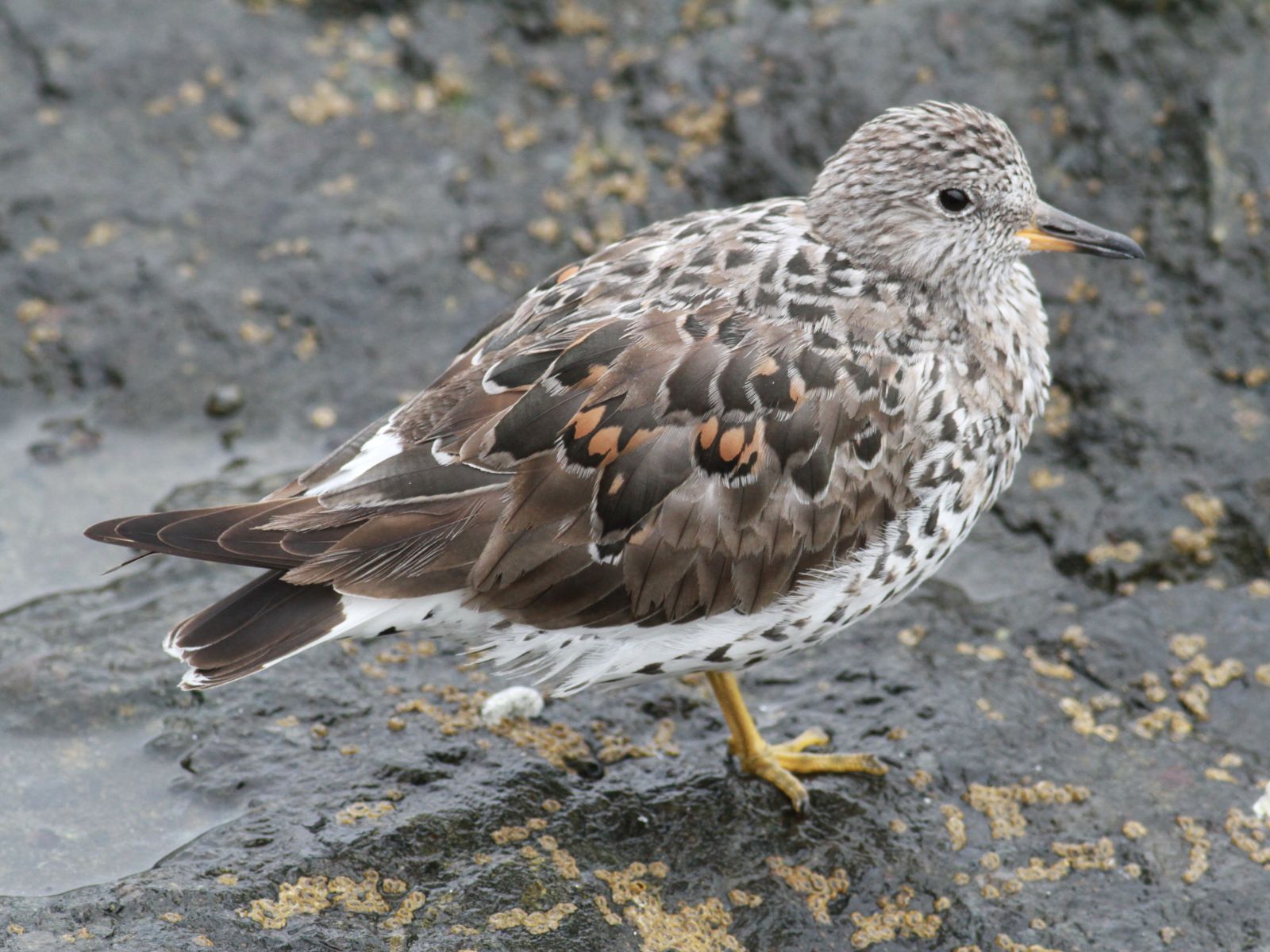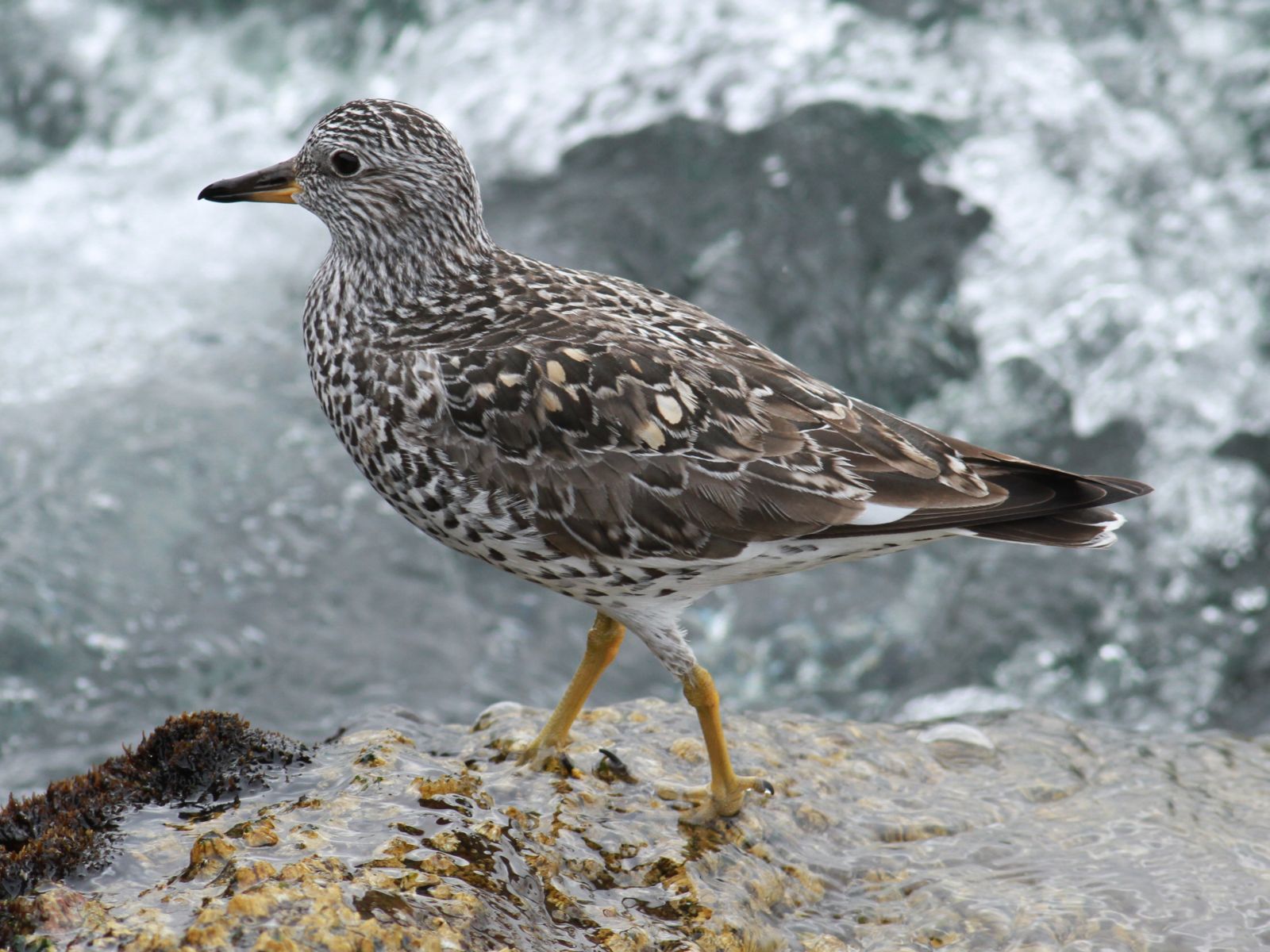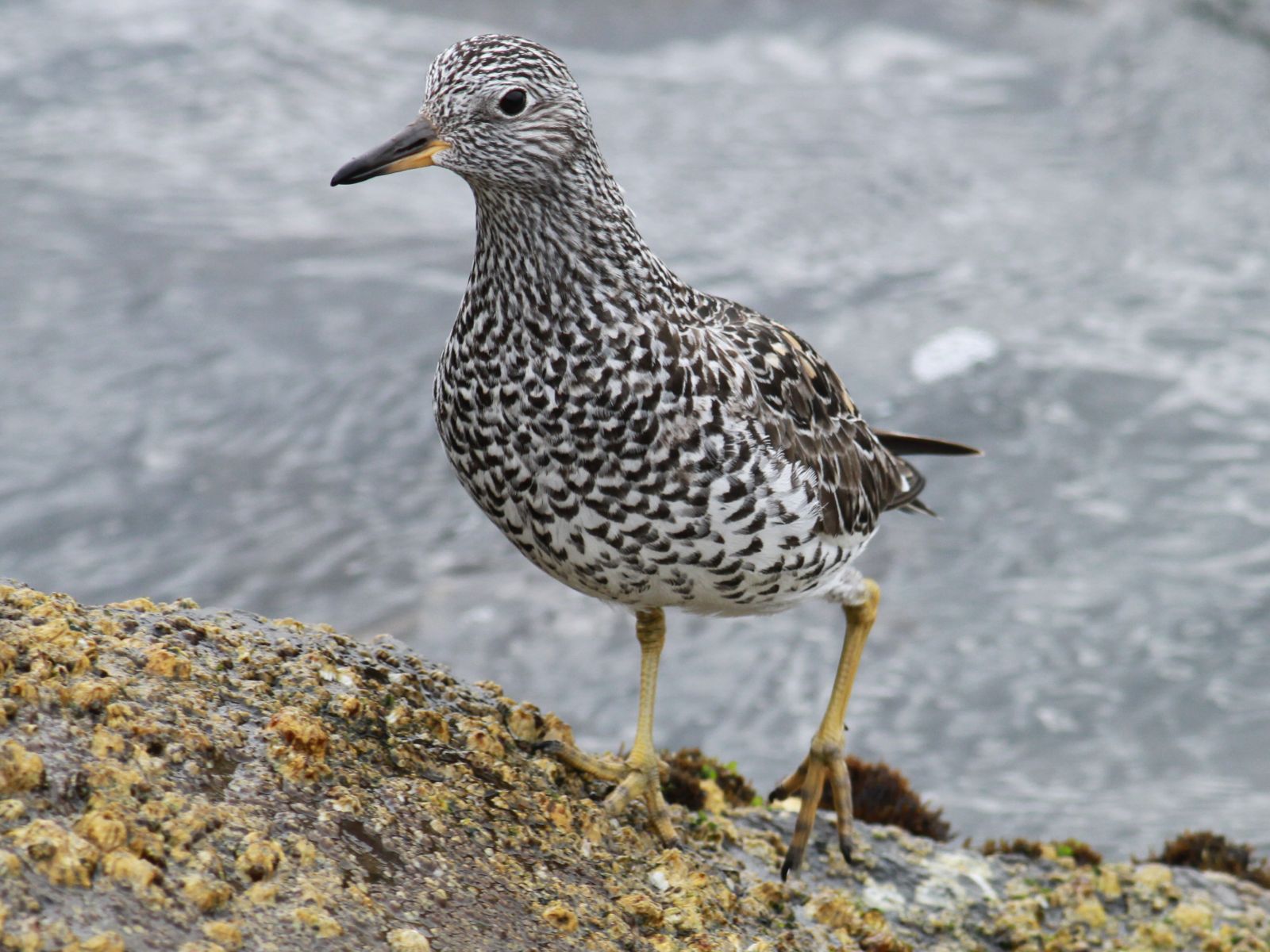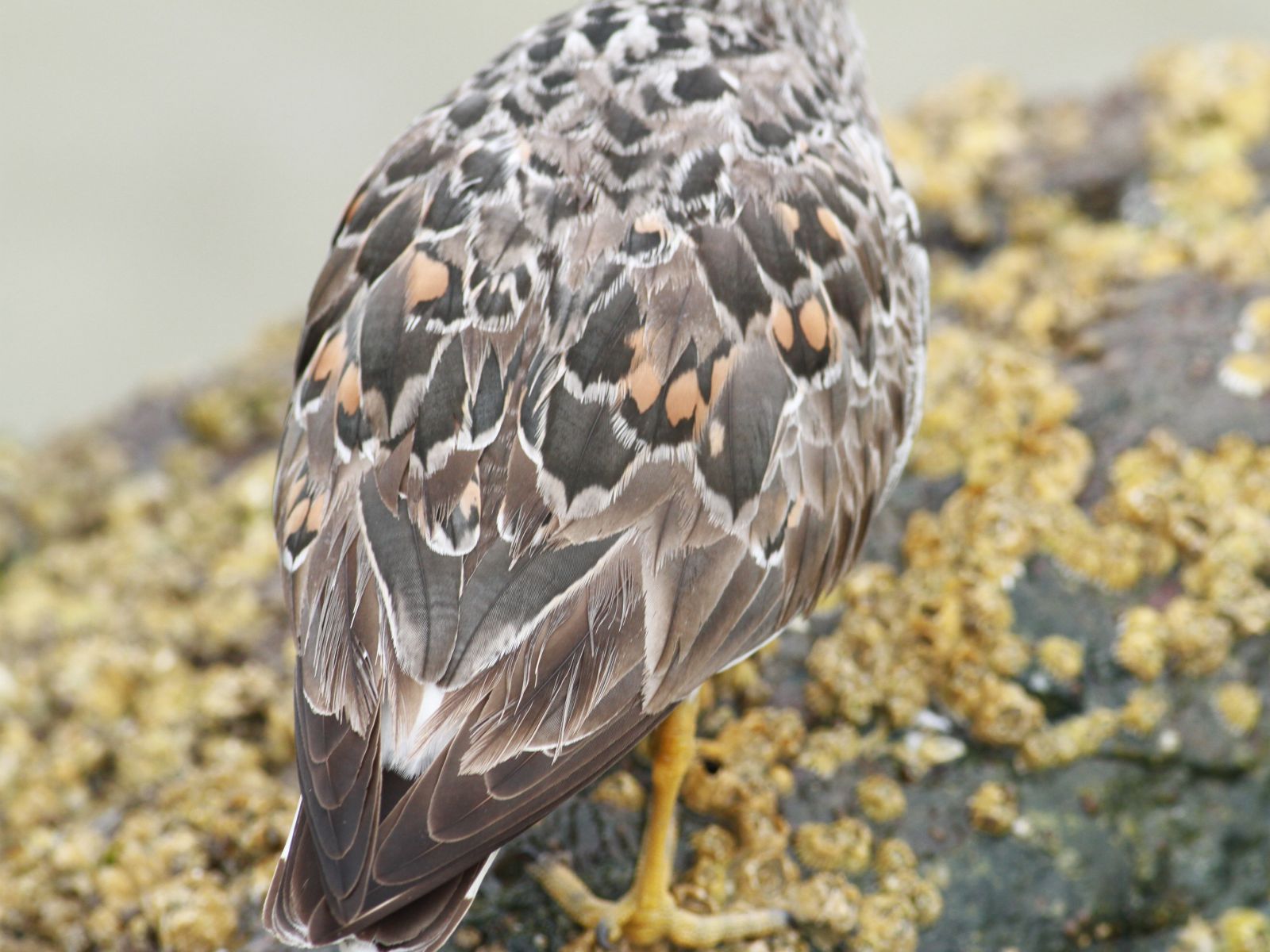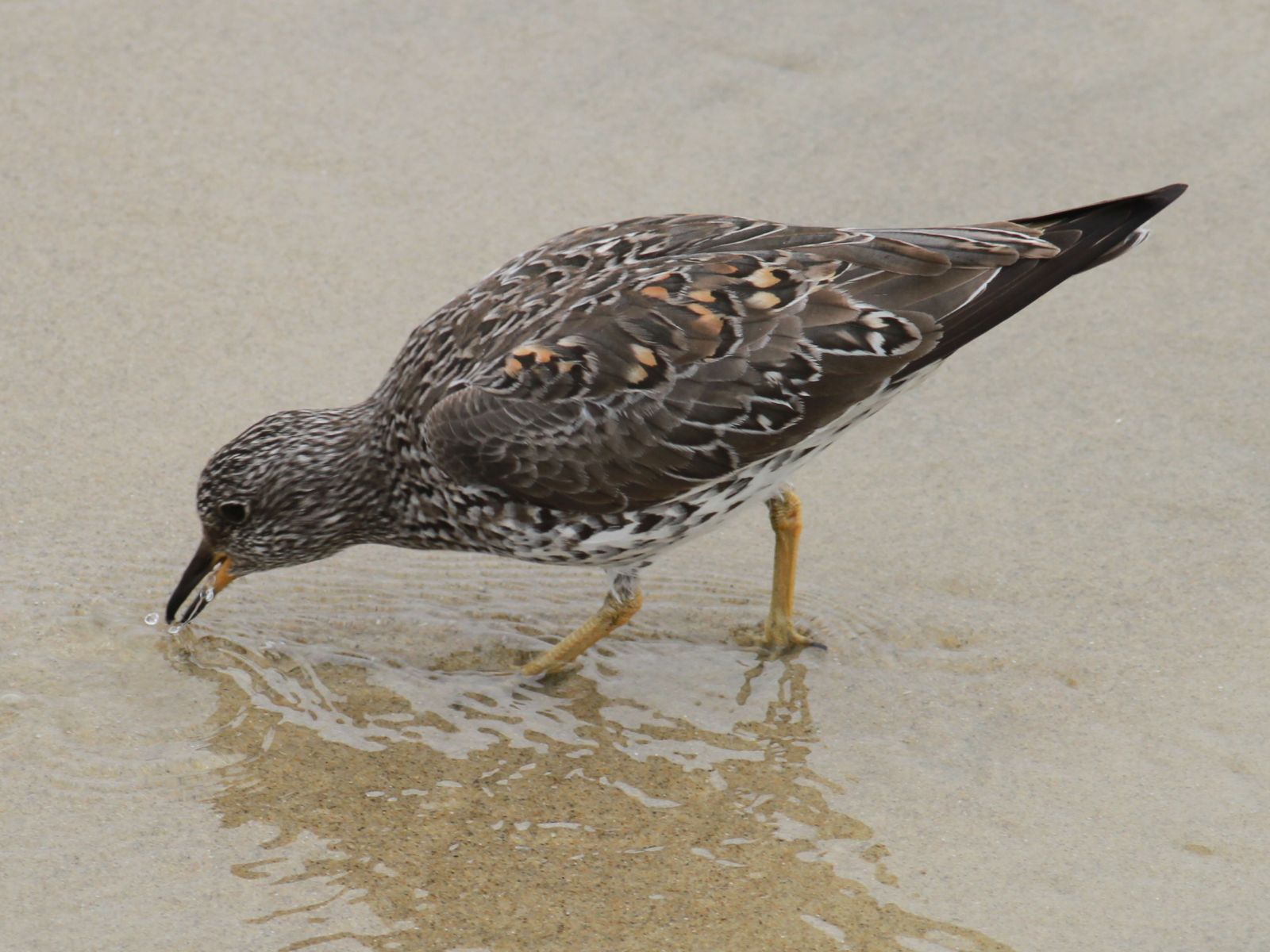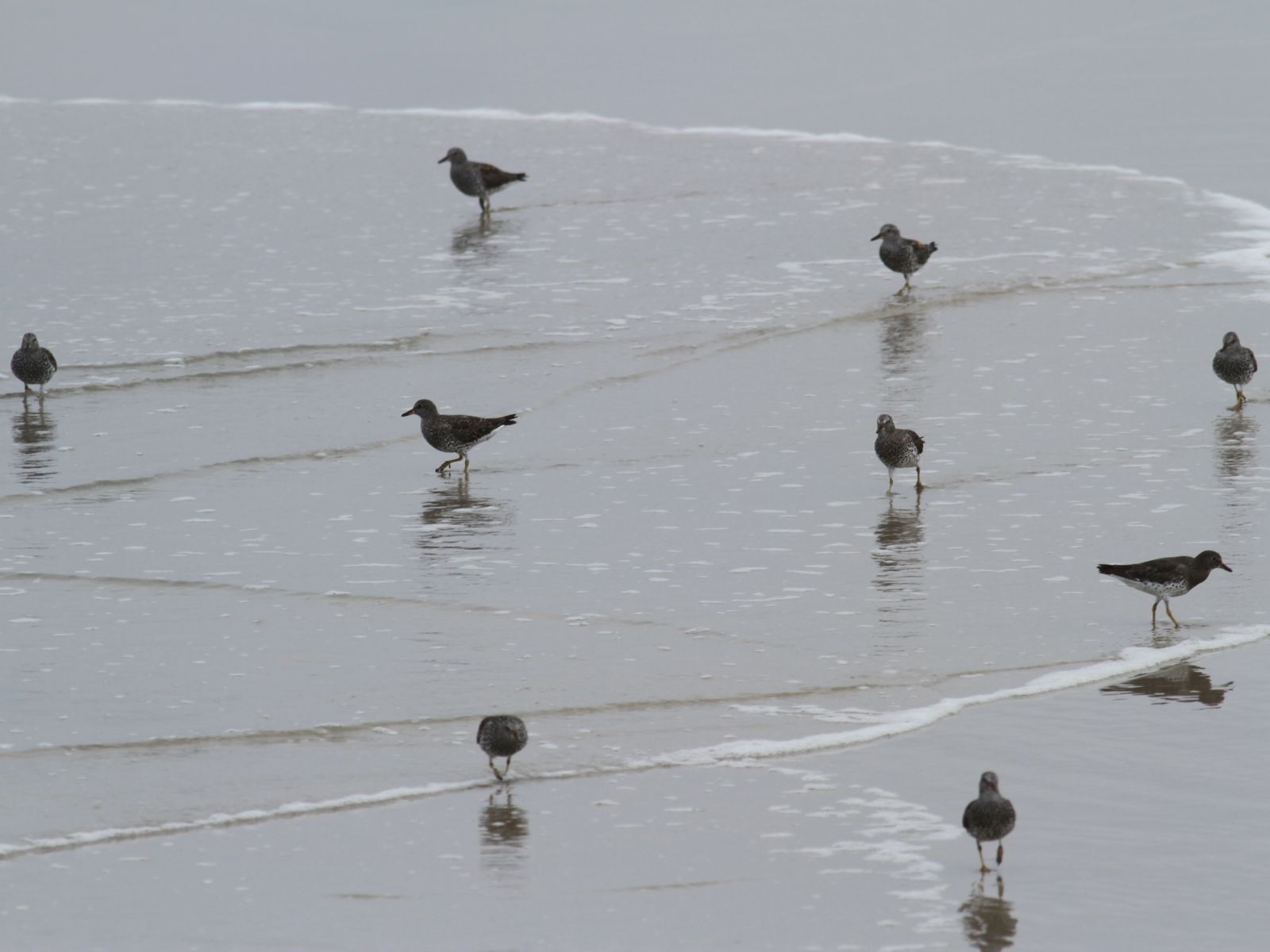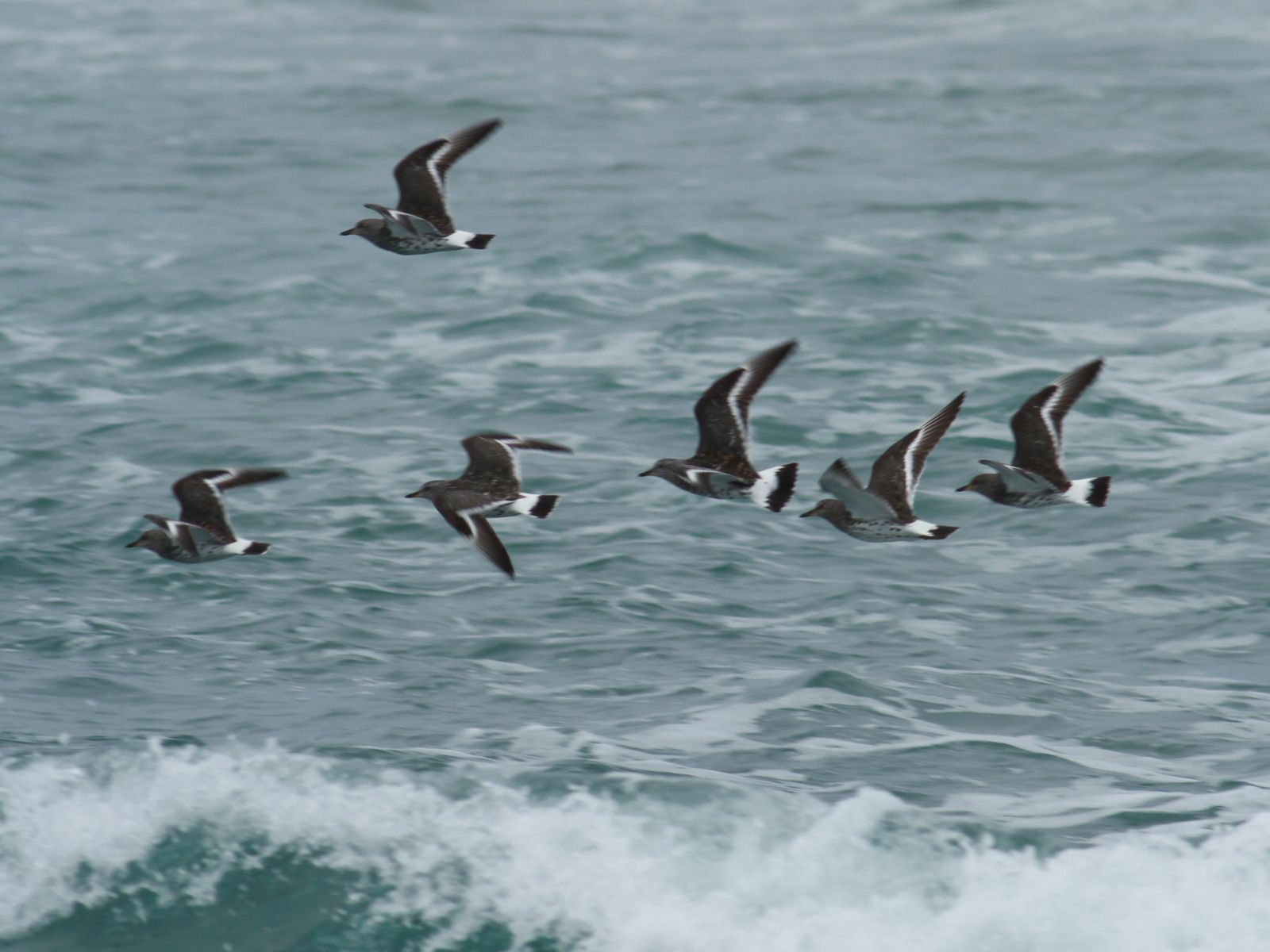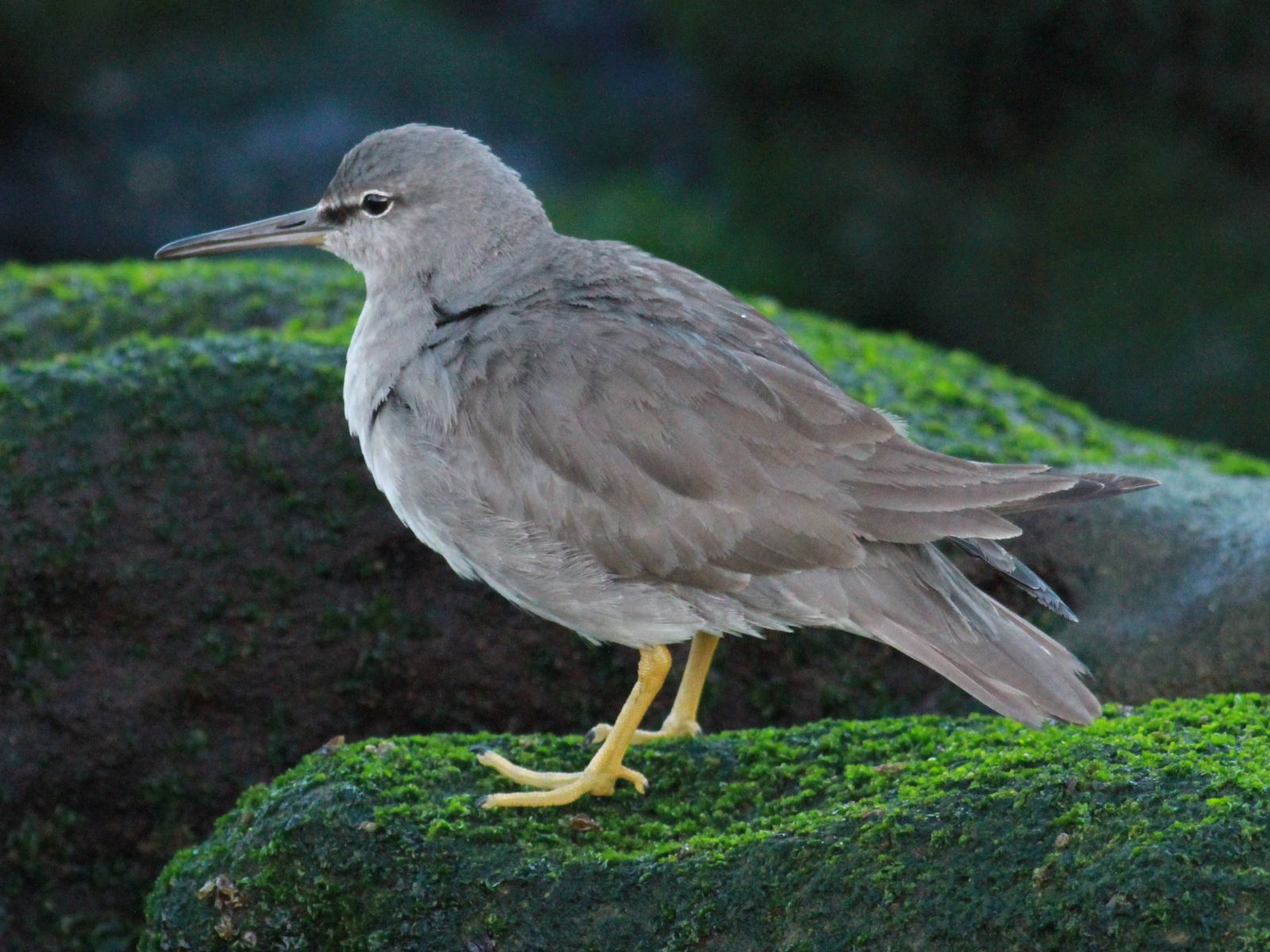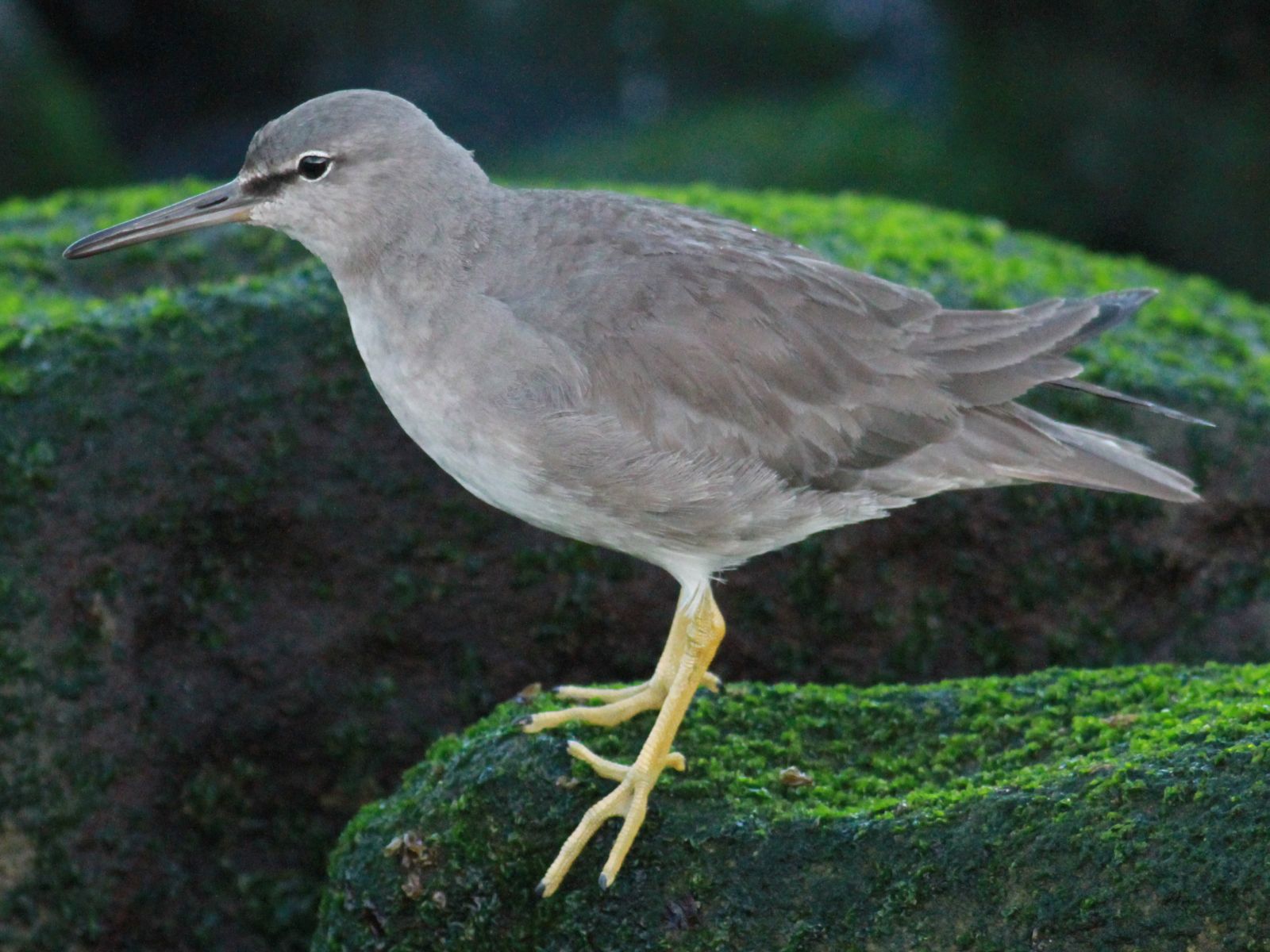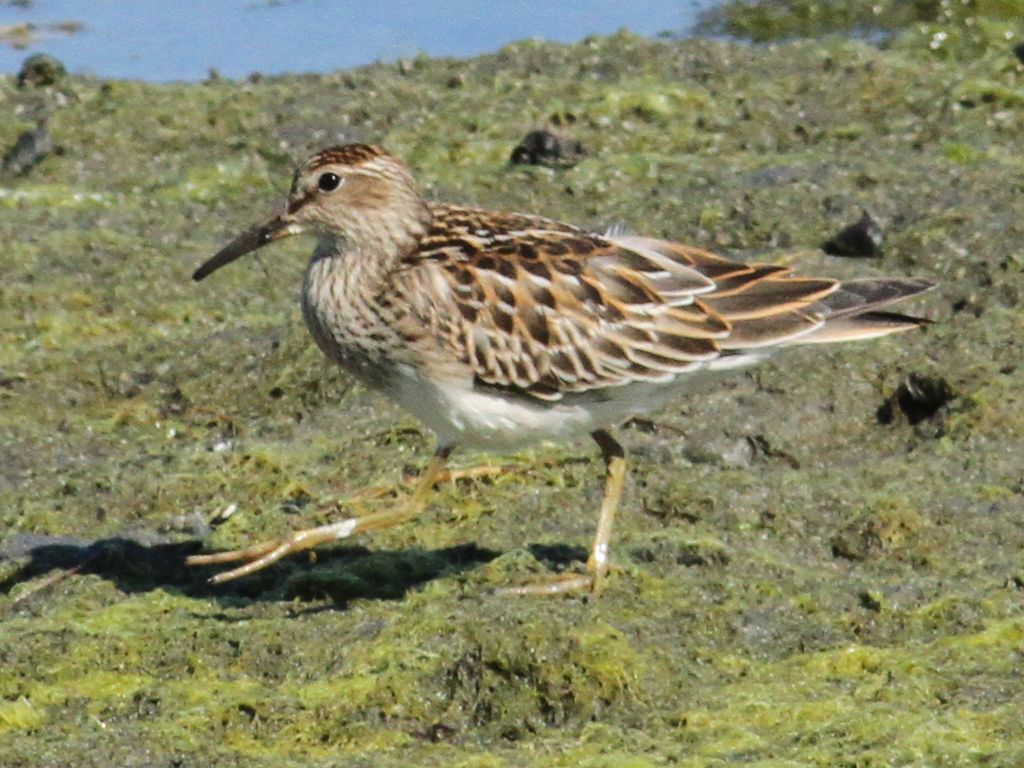Category Archives: Shorebirds
Point La Jolla – American Oystercatcher form frazari
[All photographs copyright, Gary Nunn 2015] – Flying in from the north, low over the ocean, a large shorebird quickly got my attention at Point La Jolla early this morning since a Western Gull was chasing right behind it. Weird! Things made more sense however as it approached closer and the large body and shallow stiff wingbeats soon added up to an incoming oystercatcher! As it came flying in I started to see the white belly which lifted my interest level much higher! I was hoping for a circle flight around below my viewpoint, for photography, but instead it bee-lined to a rocky perch right in front of me. Luckily it then decided to move a few yards, in a short flight, allowing a few upper and under wing photographs.
Referencing information given in Pyle (1997) and additional material at the website of the American Oystercatcher Working Group this individual seems, so far as I can tell, to match the description of a frazari form of American Oystercatcher Haematopus palliatus. It has a well demarcated black bib with a little black mottling at the sides, white underparts, white undertail coverts, almost complete white underwing, and a white greater secondary coverts wingbar on the upperwing. The uppertail coverts are mottled black and white, but this also seems consistent with descriptions in the reference literature.
I did make a preliminary score using the system described in the publication by Jehl (1985) on hybridization in oystercatchers in Baja California. The scoring instructions from Table 1 of this publication can be found, rather usefully, at the Western Field Ornithologists Rare Birds of California entry for American Oystercatcher. This individual scores high in the range, about a 33, and would be attributed to American Oystercatcher using this system. I had to make a guesstimate on the white wingbar width, I conservatively put it in the middle of the range but it does look pretty wide to me!
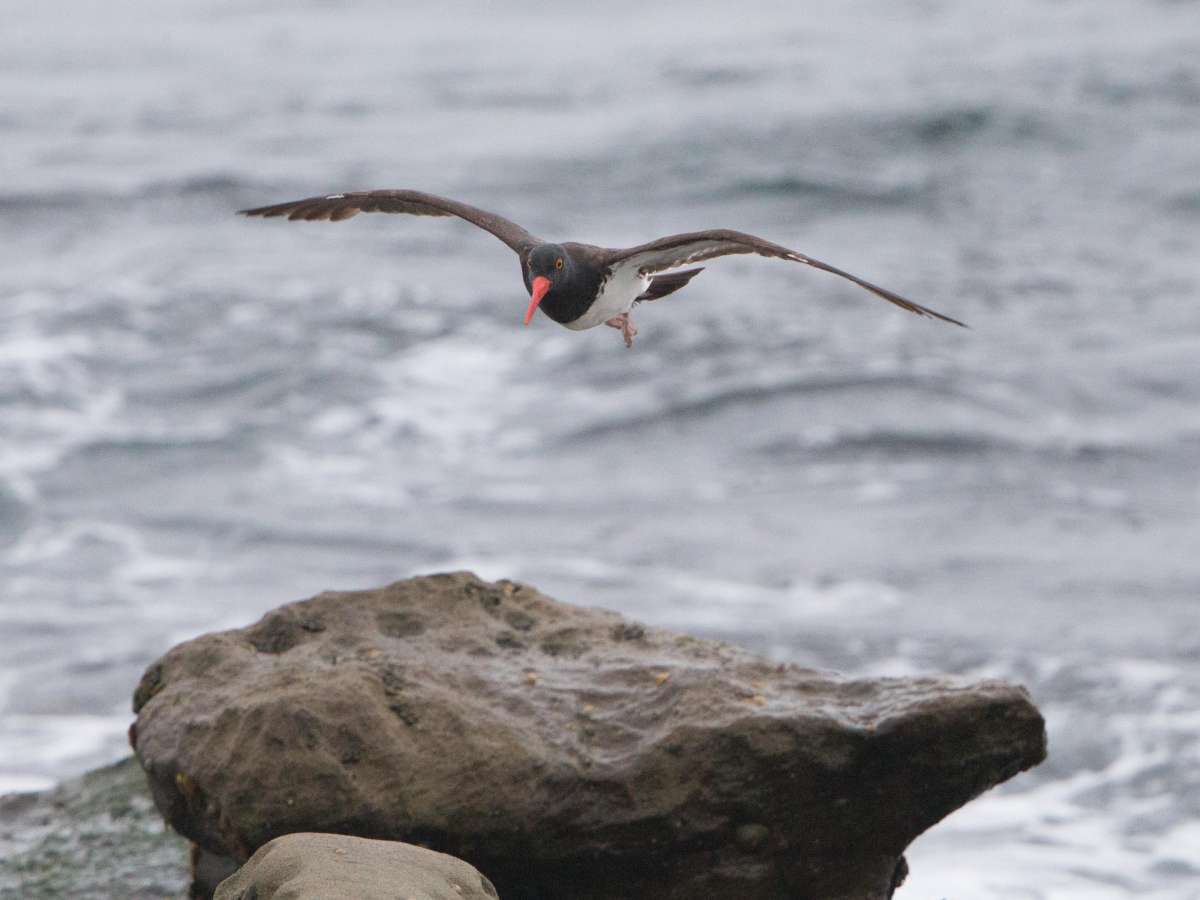
American Oystercatcher form frazari – La Jolla, San Diego County, California 07 August 2015 (© Gary Nunn)

American Oystercatcher form frazari – La Jolla, San Diego County, California 07 August 2015 (© Gary Nunn)
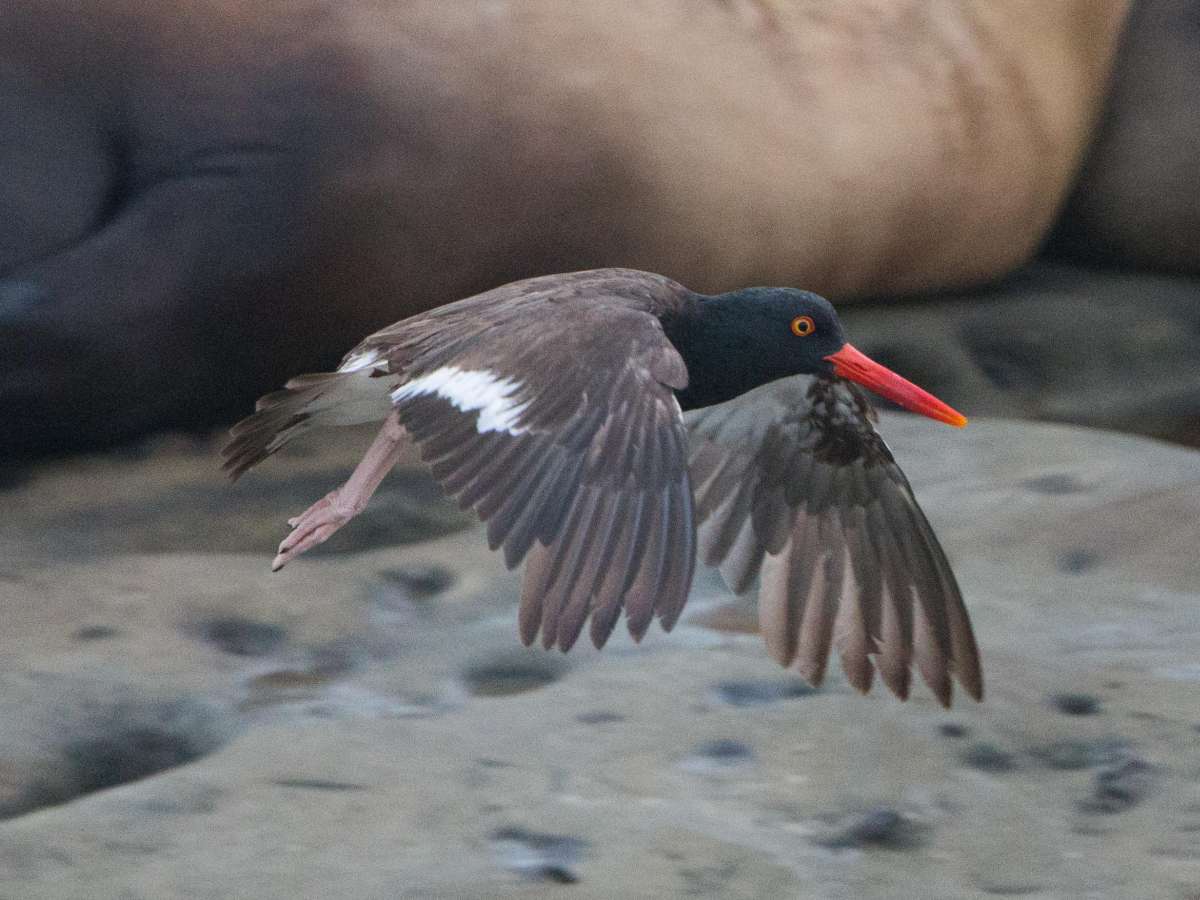
American Oystercatcher form frazari – La Jolla, San Diego County, California 07 August 2015 (© Gary Nunn)

American Oystercatcher form frazari – La Jolla, San Diego County, California 07 August 2015 (© Gary Nunn)
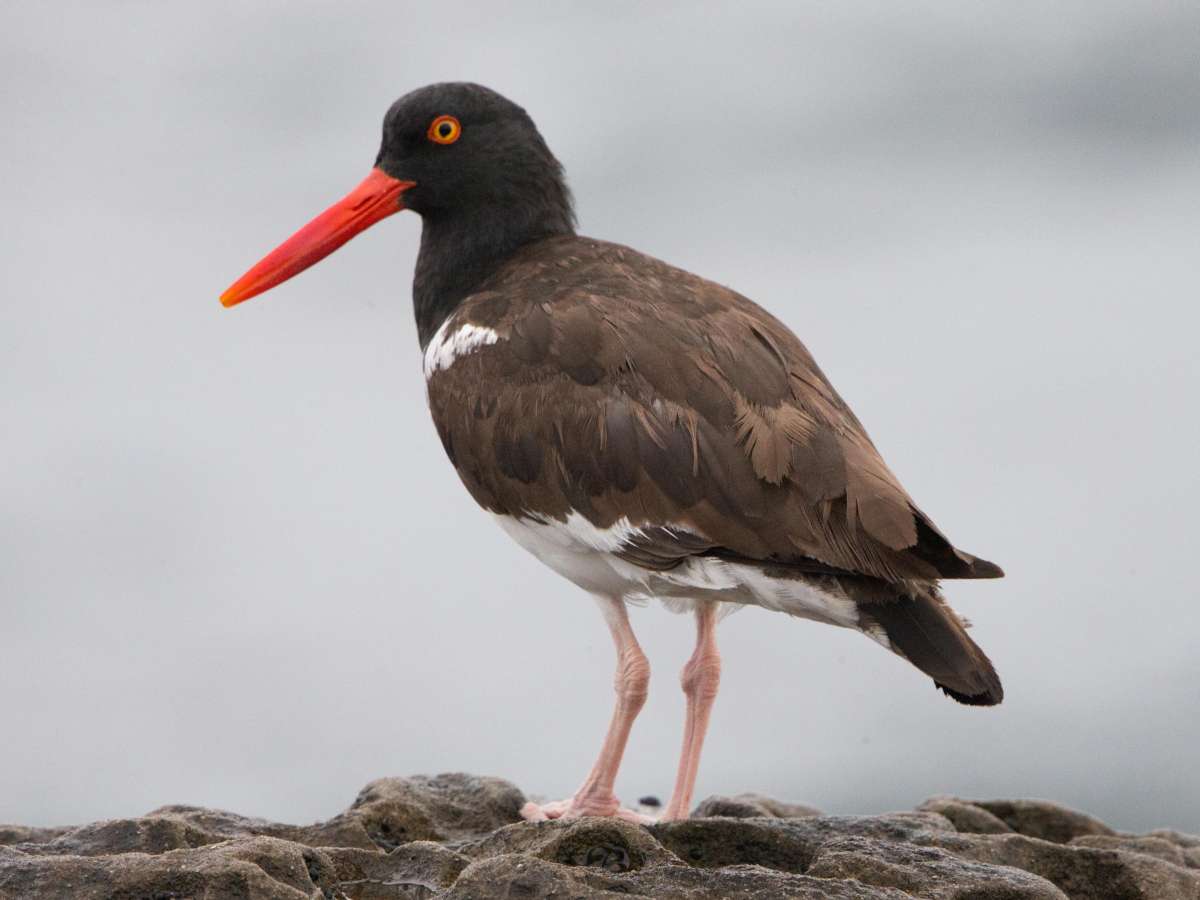
American Oystercatcher form frazari – La Jolla, San Diego County, California 07 August 2015 (© Gary Nunn)
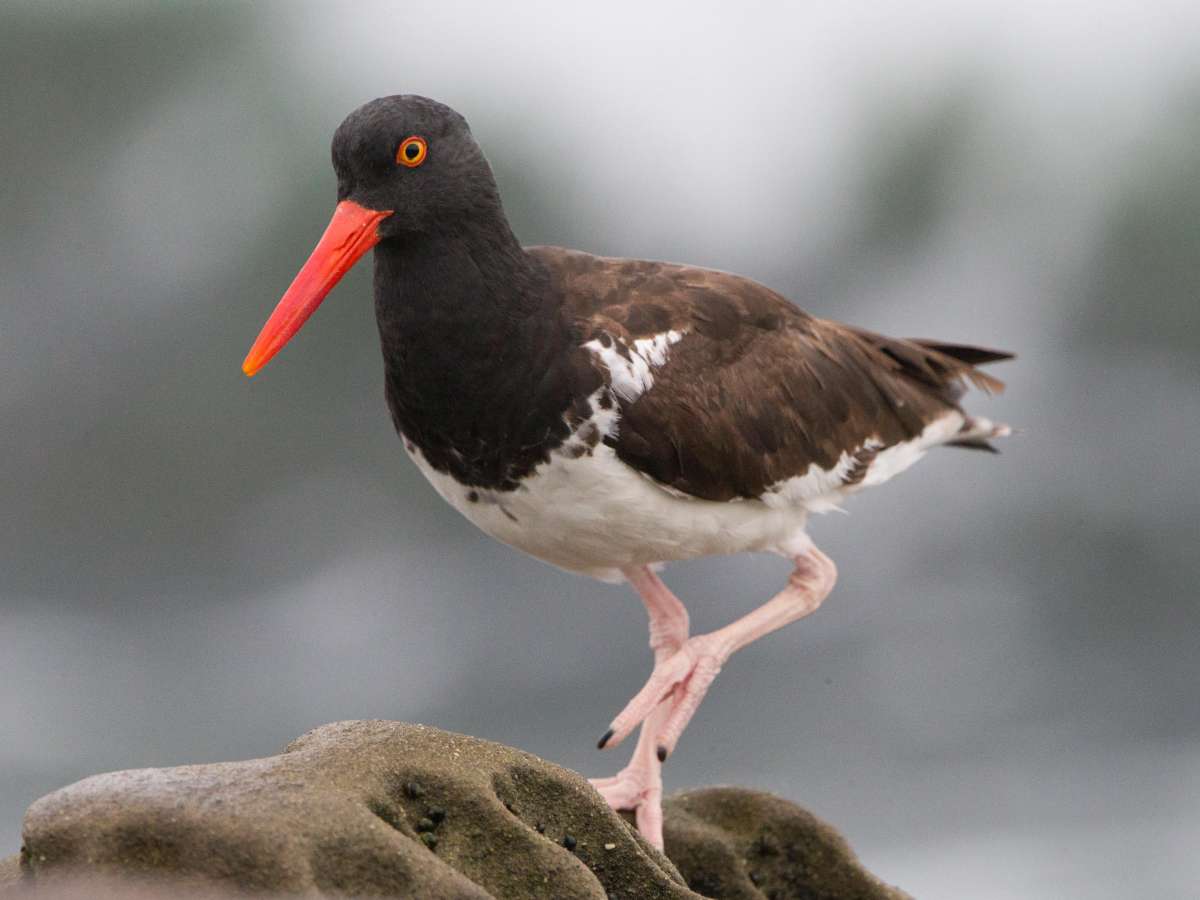
American Oystercatcher form frazari – La Jolla, San Diego County, California 07 August 2015 (© Gary Nunn)
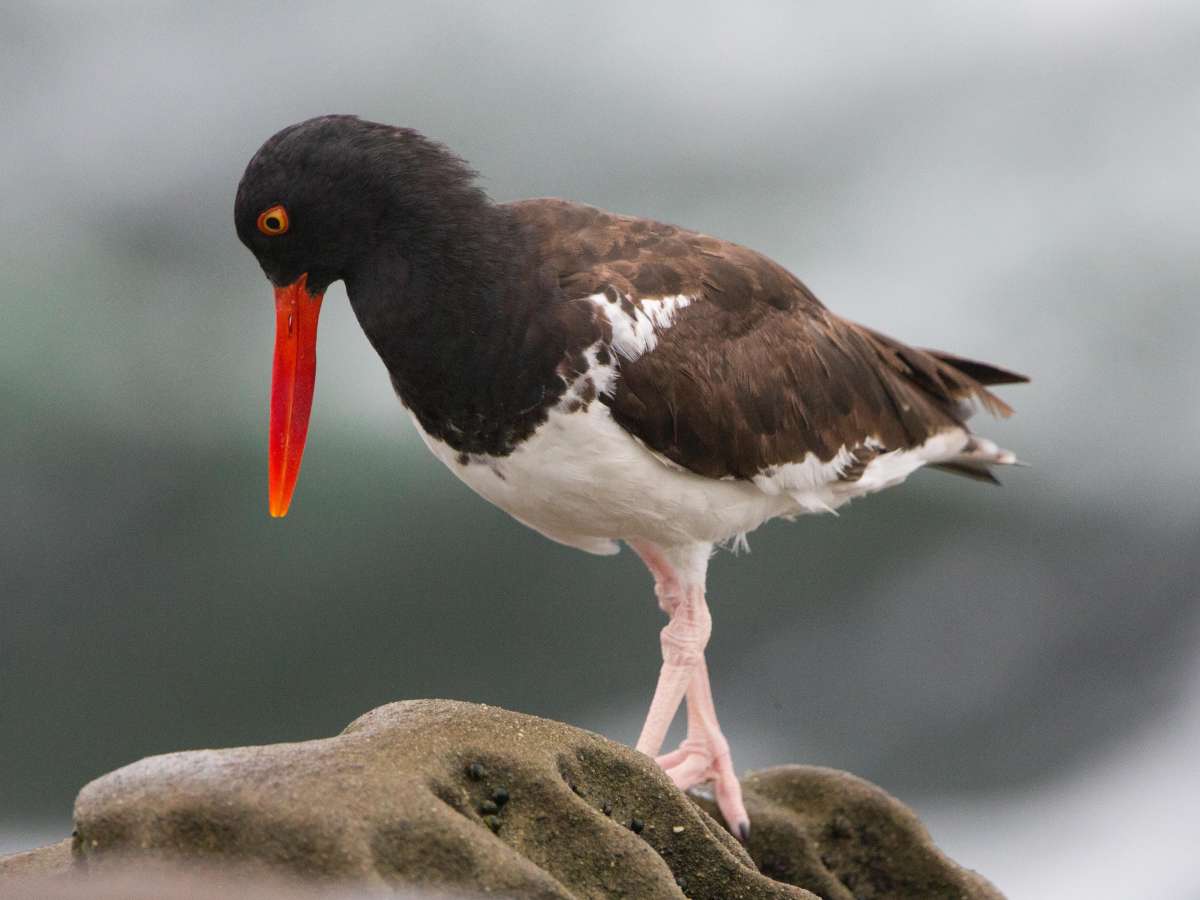
American Oystercatcher form frazari – La Jolla, San Diego County, California 07 August 2015 (© Gary Nunn)

American Oystercatcher form frazari – La Jolla, San Diego County, California 07 August 2015 (© Gary Nunn)

American Oystercatcher form frazari – La Jolla, San Diego County, California 07 August 2015 (© Gary Nunn)
Bright contrast plumage – Red-necked Phalaropes
[All photographs copyright, Gary Nunn 2013] – Today the winds picked up around San Diego and I made a quick visit to Point La Jolla to see what seabirds might be blown onshore. The main spectacle was the incredible number of Red-necked Phalarope Phalaropus lobatus flying strongly south. These phalaropes appeared to be on the move and had traveled deep into the cove. In order to exit south many skimmed above the breaking surf passing close around the point. Flocks a hundred or more strong followed one after the other. Streams of phalaropes further out kept coming too. I probably saw 2000 Red-necked Phalarope easily in 30 minutes! I am usually frustrated by the Canon 7D’s autofocus behavior, which pulls focus on contrast edges, it always locks on to distant ocean waves! But the crisp fresh plumaged phalaropes, flying over the breaking whitewater surf, provided a contrast edge the 7D could identify and focus on.
Surfbirds living up to their name – in the surf!
[All photographs copyright, Gary Nunn 2013] – After not finding too many new migrants around Point Loma this morning I decided to switch gears and take a look along the Mission Bay Jetty. The north side can be good for shorebirds so I decided to start there. Hopping rocks along the jetty is quite dangerous, so I was glad to find most birds right on the north side close to, or on, the beach. In addition to one Wandering Tattler and four Black Turnstone, a good find was a group of fifteen Surfbird together, excitedly milling around, yes, in the surf! They appeared to be searching for invertebrates as the waves receded, oddly keeping their distance from one another. This species does winter in small numbers on the jetty, with eight being found there on the SDFO 2013 New Year Pelagic. This group seemed a bit larger however, possibly including early migrants stopped off here on their journey north. Most of the group were advancing into alternate plumage, but one or two birds were still in basic plumage. As is usual for this species, they were very tame, allowing me to approach closely and obtain these photographs.
Weekend highlights – 03 Feb 2013
[All photographs copyright, Gary Nunn 2013] – I spent the morning birding around San Diego with out of town visitors Lisa and Joel Swanstrom from Minneapolis, Minnesota. An early start found us at Point La Jolla, where the impressively large 6+ feet surf was crashing right on to the headland. The only seabirds of note were a continuous stream of Black-vented Shearwaters offshore, and one group of Rhinoceros Auklet, about a dozen strong, flying together south. We made a lucky check of the algae covered beach boulders in front of the point which yielded very close views of a basic plumaged Wandering Tattler Tringa incana. This was a new species for Lisa and Joel and afforded excellent views and saved us creeping out on the exposed seawall at The Children’s Pool, where this species is customarily seen. Nearby there was also a small flock of Black Turnstone, some Least Sandpipers, and a Sanderling rounded out the littoral waders that could be seen boulder hopping in the surf.
A late morning check of the Sweetwater River in Chula Vista, between Highland Ave and N 2nd Ave, found us a bright male Eurasian Wigeon Anas penelope in among the more numerous American Wigeon. After some close views it made a short flight upstream, where it quickly slid away to remain hidden from view underneath the bank of the tidal channel.
Pectoral Sandpiper on the San Diego River
[All photographs copyright, Gary Nunn 2012] – It has been pretty quiet lately in San Diego County on the shorebird scene, so it was a nice surprise to hear that Dave Povey had discovered a Pectoral Sandpiper Calidris melanotos on 07 Sep 2012 feeding along the edge of the San Diego River flood control channel at Robb Field, Ocean Beach. I was in the neighborhood and went right over there to find the bird was quite close, feeding on the algae mats, allowing some detailed photography.
The close views allowed careful examination of the rich rufous fringed plumage of the upperparts of this juvenile. It also has some buffy wash to the breast sides. The bird let out a couple of characteristic “trreeett” calls as it made a few short agile flights when the main group of Least and Western Sandpipers flushed.
Distinguished from the much rarer Sharp-tailed Sandpiper by its neatly defined complete breast and neck streaking, less capped appearance of the head, and a marginally longer bill. A nice bird to see close up!
This location, accessed from Robb Field in Ocean Beach, is a good shorebird spot with some excellent previous recorded species including Bar-tailed Godwit and Baird’s Sandpiper. Some disturbance occurs from fishermen collecting bait from the mudflats here, but birds seem to tolerate this presence and some species, for example Snowy Egrets and Marbled Godwits, even follow the fishermen around picking over the muddy excavations.
Many thanks to Dave Povey for getting the news out quickly because this species can disappear in a second, as I witnessed in 2011 in South San Diego Bay. Detected in flight by its call, an individual touched down on the mudlflat right in front of me, I spun my ‘scope around and it had gone!


